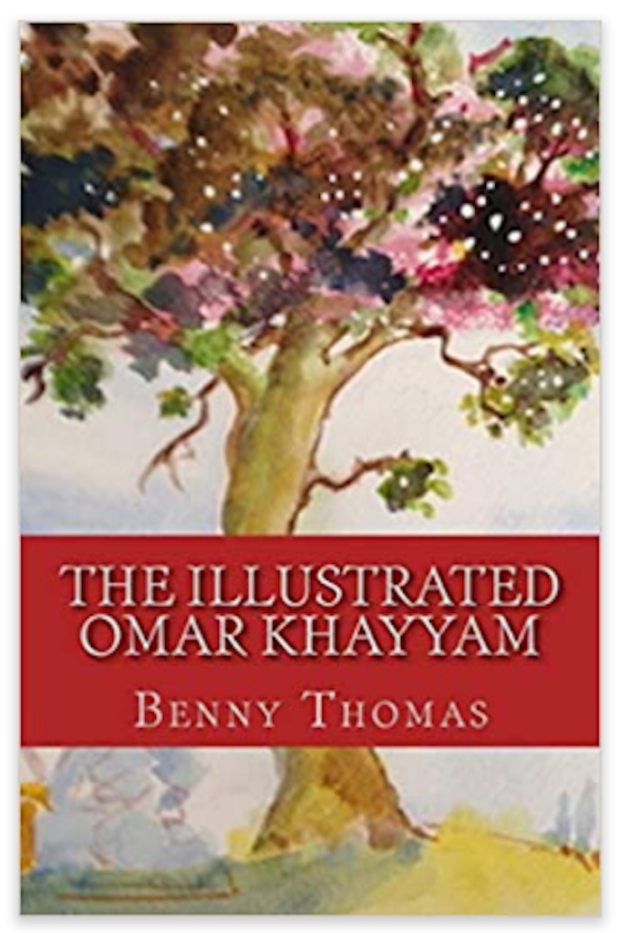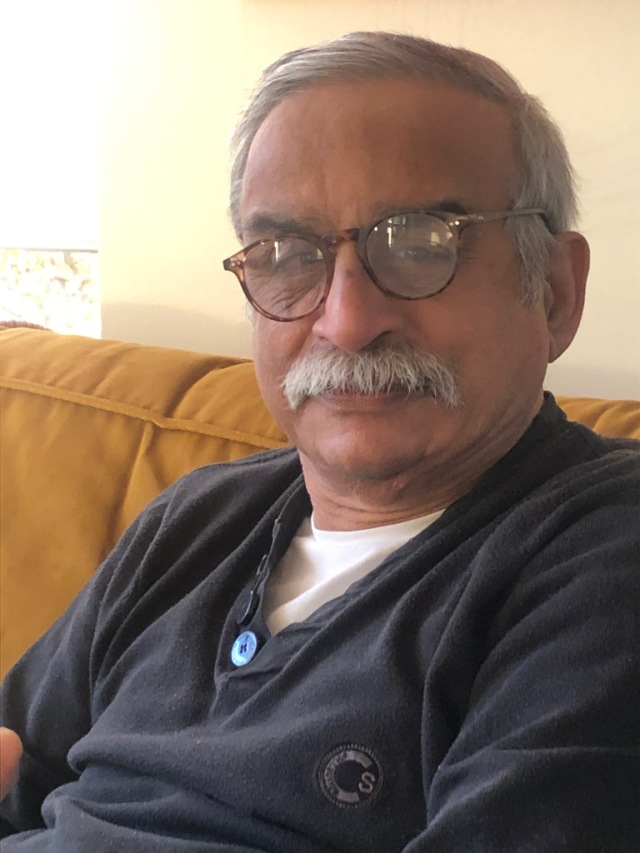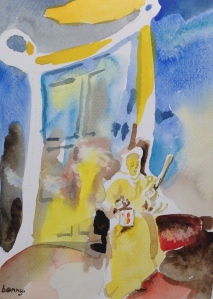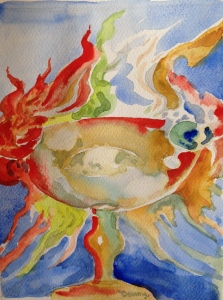-
Recent Posts
Archives
Categories
Meta
Quatrain 250 -The Illustrated Omar Khayyam
Quatrain 250
Blessed be the One who chose hour and place
For man who may stand still, yet lose his race;
His place in pride, forfeit to another.
All too brief, -the candle must out with a hiss
Posted in Uncategorized
Leave a comment
The Illustrated Omar Khayyam
Notice
I shall not be writing any more quatrains as I have said all I wanted to say in that form;
Incase you are interested get hold of The Illustrated Omar Khayyam it is available with Amazon, paperback or kindle. 265 quatrains plus 51 watercolor illustrations. For those who prefer a cheaper edition there is also Rubaiyat 2014 without illustrations available. Thanks
Posted in Uncategorized
Leave a comment
Cross-Cultural Co-existence
“Soul of man is not stranger/
to music of the spheres.
Even in an infidel music of his Maker
Is as sweet as the Holy One did parse
Paradise in such and such one’s ears.”
benny
On 9 December 1499, the citizens of Granada awoke to a scene of devastation: the smouldering remains of over a million Arabic manuscripts, burnt on the orders of the Spanish Inquisition. The scale of cultural desecration is difficult to comprehend – it stands alongside the burning of the Mayan codices by Conquistadors 60 years later, and the destruction of the library at Alexandria.
A thousand years ago, as much of Europe languished in the Dark Ages, the Iberian peninsula was a cultural oasis, the brightest beacon of civilisation. Under the Umayyad dynasty, the caliphate of Al-Andalus stretched from Lisbon to Zaragoza, and centred on the Andalusian cities of Córdoba, Granada and Seville. From the 8th Century, the caliphate oversaw a period of extraordinary cross-cultural creativity known as La Convivencia(the Coexistence).
Al-Andalus was characterised by cultural hybridity and a spirit of openness, attracting scholars and merchants with spices from India and China and songs from Iraq and Syria. The translation of long-neglected Greek works of philosophy helped lay the intellectual foundations of the Renaissance, and made Al-Andalus the cultural capital of Europe for over 300 years.
The legacy of Al-Andalus is evident in our own vocabulary, from discoveries in mathematics (algebra) to chemistry (alkali). Córdoba, home to the largest library in Europe, was described by a Christian poet as “the ornament of the world”. It was the birthplace of the Jewish theologian Maimonides and the Muslim polymath Ibn Rushd (known to Christians as Averroes), and a meeting place for the Sufi mystic Ibn Arabi and many others.
Among the Muslim poets of Al-Andalus, there was a concerted attempt to rediscover and reinvent the literary forms of Arabic, sophisticated and lyrical, rooted in the concept of fasaaha (clarity, elegance). The fire in Granada destroyed part of this heritage, but it survives in an unexpected form – in an imaginative body of Hebrew poetry, which illustrates the extent of cross-cultural exchange.
Golden Age
Peter Cole, the foremost translator of Hebrew poetry from Al-Andalus, argues in his book The Dream of the Poem that a major legacy of the Moorish writers was to inspire Jewish poets to emulate their work. Just as Roman authors had recast Latin to emulate Greek epic form, Jewish writers reconfigured the style of classical Hebrew.
Nor was fire the only destroyer: some Arabic poetry was suppressed by Muslim clerics, who regarded it as profane and heretical. A number of the most important Arabic writers of the period, such as Bashar ibn Burd and Abu Nuwas, whose work would influence Persian poets Hafiz and Omar Khayyam, were killed or imprisoned for celebrating ‘earthly’ pleasures.
Moral: Fools kill body for an idea but the idea is neither his nor mine. It is left for the Holy One to give whom He will, find paradise on earth: Poetry is the stone that has thousand facets and millions ways to dazzle His children.
(Ack: Benjamin Ramm/BBC online-culture/The 1000 year old lost Arabic poem lives in Hebrew of 29 June,2017)
benny
Posted in Uncategorized
Leave a comment
Rubā‘iyyāt – 2014 is live!
Notice: My book is available with Amazon on Kindle. It is available on Apple i, books, Google Play, Kobo as well. In a couple of days Barnes&Nobles and Bibliotheca are expected to make available. There are all the quatrains , 265 of them originally published under The Illustrated Omar Khayyam.
My thanks owe to Pronoun.com for making it available.
Benny
Posted in Omar Khayyam, Persian poetry, quatrains, Rubaiyat, Uncategorized
Tagged Benny Thomas, quatrains, rubaiyyat
Leave a comment
2015 in review
The WordPress.com stats helper monkeys prepared a 2015 annual report for this blog.
Here’s an excerpt:
A San Francisco cable car holds 60 people. This blog was viewed about 730 times in 2015. If it were a cable car, it would take about 12 trips to carry that many people.
Posted in Uncategorized
Leave a comment
Past and Present : A Rubai’yat
Roses, crushed roses in runlets fallen
Ghosts of past,- and nothing of attar remain;
Tears run unabashed along fair cheeks
Dipped from an inkwell of heart that is plain.
benny
The Illustrated Omar Khayyam
Posted in art, Persian poetry
Tagged Amazon.USA, art, Benny Thomas, illustration, quatrains, rubaiyat, the Illustrated Omar Khayyam, watercolor
Leave a comment
2014 in review
The WordPress.com stats helper monkeys prepared a 2014 annual report for this blog.
Here's an excerpt:
A San Francisco cable car holds 60 people. This blog was viewed about 820 times in 2014. If it were a cable car, it would take about 14 trips to carry that many people.
Posted in Uncategorized
Leave a comment
Analysis of the Key Quatrain:the Sun /The Illustrated Omar Khayyam
“Aeons are wink of time at the center,-
The Sun, the keystone holds right through the sphere;
Entwin’d pillars of fire alternate where
Day and Night stoke all- knowing soul its fire.”
The divine One whose presence was,is and will be is eternal. Where Time and Space is zero: gradations of time and change in place do not make sense. It is like Head and Heart are inseparable. Emotions and Will are interchangeable to make no sense for the divine Will to be coloured. There is no partiality no prejudices.
It is Truth absolute.
What would that mean for his creatures? Art, poetry music that proceed from heart instil in man certain changes so that one might say he is uplifted. Music soothes the savage breast and turns him a man godly as to pacify, as Orpheus did when he descended into the Hades. In the divine one the Apollonian and Dionysian elements are perfectly matched.
Man created in the image of the divine One is an individual self contained. His soul is the emblem of the breath of God to be inspired and in turn inspire others. In Hebraic tradition Adam was a living soul since he had in him to choose the best since his faculties were so well refined by the Presence.
In the key quatrain the Sun is a symbol for the Presence and it is the keystone upholding the entire edifice of human achievements. Day and Night are symbols for his visible and inner worlds.
For further reading visit: http://www.lulu.com/spotlight/bennymkje





